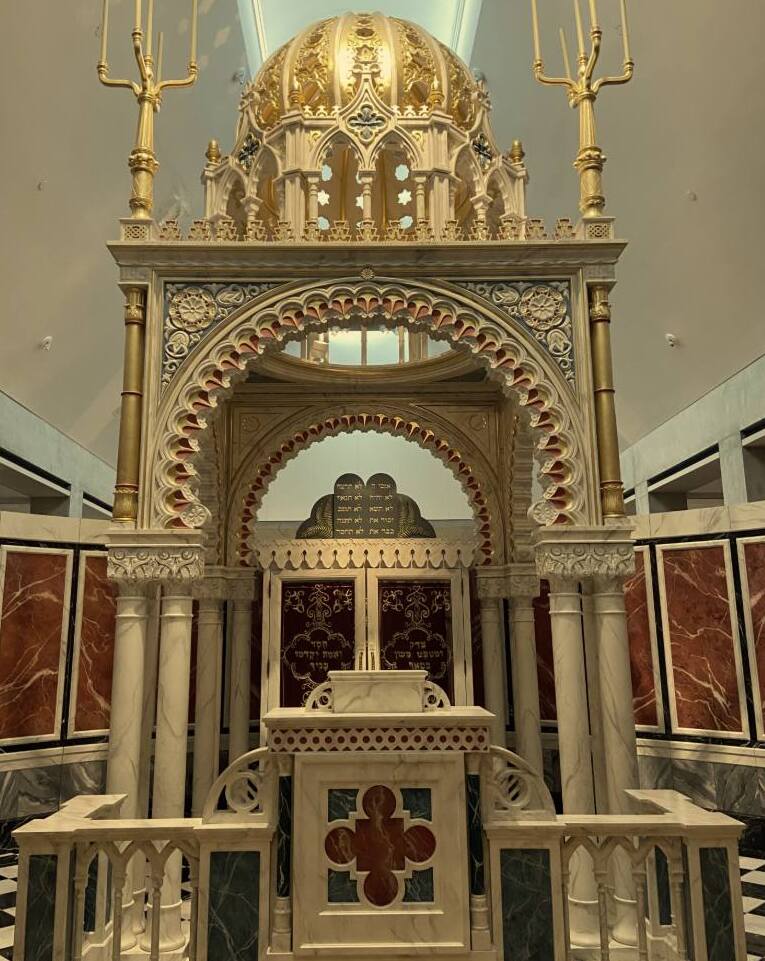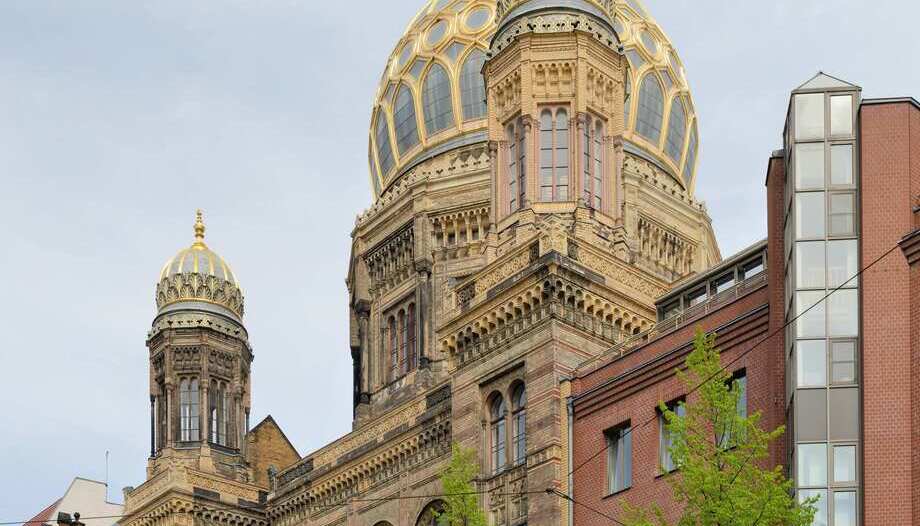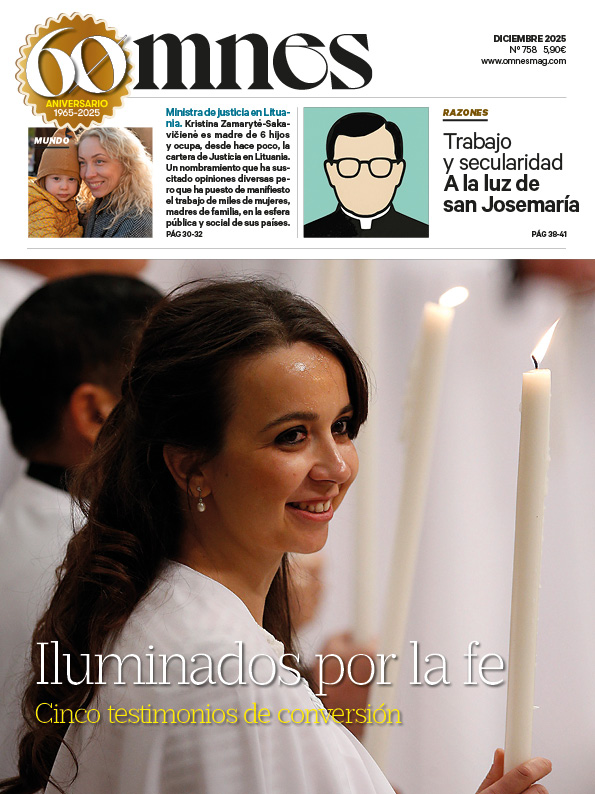At the beginning of the 20th century, Berlin had more than one hundred synagogues. The first large synagogue was built in 1714 by Jewish families who had arrived from Vienna 40 years earlier.
Frederick William I, Margrave of Brandenburg and Duke of Prussia (1620-1688), known as the Great Elector, invited them in the hope that their skills and business relationships would boost the city.
In this context, it is worth remembering that, unlike cities such as Cologne, Frankfurt and Nuremberg, which were highly populated in the Middle Ages and early modern period, Berlin did not boom until the late 17th and early 18th centuries.
Not only Berlin, but also the whole of Brandenburg had been sparsely populated until then. For this reason, after the Thirty Years' War (1618-1648), Frederick William first attracted the French Huguenots, who were known as expert merchants.
The majority settled in Berlin, making up 25 percent of the population in 1701. But the Jewish community also grew rapidly, especially with the influx of those fleeing the pogroms in their countries of origin.
In 1860, some 28,000 Jews lived in Berlin. Between 1855 and 1875, the synagogue on Oranienburger Strasse was built, seating 3,200 people, reflecting the growing confidence of the Jewish community.
The center of Jewish life was not far from there, between the Hackescher Markt and the Alexanderplatz - the setting for Alfred Döblin's famous novel "Berlin Alexanderplatz" (1929).
In 1905, Berlin was home to 130,487 Jews, 4.3 percent of the population. Numerous synagogues were built; the last, in the Wilmersdorf district, was consecrated on September 16, 1930.
However, most of them were destroyed during the "Pogrom Night" of November 9, 1938. Today, only ten synagogues remain in Berlin, the best known being the "New Synagogue" which, as mentioned above, stands on Oranienburger Strasse.
The New Synagogue
In 1856, the Jewish community acquired land on Oranienburger Strasse and in 1857 an architectural competition was held for a new synagogue. Eduard Knoblauch, an architect who was a member of the Prussian Academy of Arts, chaired the competition committee, but eventually took charge of the design himself.
When he became seriously ill in 1859, he was replaced by Friedrich August Stüler, Prussian court architect, who designed the interior. The synagogue was consecrated on September 5, 1866, in the presence of Reich Chancellor Otto von Bismarck.
During the pogroms of November 1938, members of the SA attempted to set fire to the New Synagogue. Wilhelm Krützfeld, head of the nearby police station, intervened to protect the building, pointing out its status as a protected monument.
Thanks to his intervention, firefighters extinguished the fire, saving the synagogue. Krützfeld later suffered harassment at work; today, a memorial plaque commemorates his courageous action.
Once the consequences of the fire had been eliminated, the New Synagogue could again be used for religious services as of April 1939. The dome had to be painted with camouflage paint due to the threat of Allied air raids.
After a last religious service in the small prayer hall on January 14, 1943, the Wehrmacht took over the building.
At the beginning of the so-called Battle of Berlin by the British Bomber Command, the synagogue was severely damaged on the night of November 23, 1943. However, further damage was caused to the building when the ruins were used as a source of building materials after the war.
This led to its partial demolition in 1958. After the division of Berlin, the New Synagogue first remained in the Soviet sector and, since the creation of the German Democratic Republic (GDR) in 1949, in East Berlin.
In 1988, while the GDR was still in existence, reconstruction work began on the ruins. In 1995, already after the German reunification, the "Centrum Judaicum" was inaugurated.
This museum and cultural center houses one of the most important archives on German Jewry. The museum deals with the themes of German-Jewish history: enculturation, the self-image of German Jews, persecution and genocide, the reconstruction of communities and the rediscovery of Jewish Berlin.
All this makes the building a landmark not only for Berlin, but also an internationally recognized symbol of the history of Berlin and German Jewry.
Architecture and Symbolism

The 3,200-seat New Synagogue building reflected the steady growth of the Berlin community, which had quadrupled to 28,000 people in the two decades prior to 1866, mainly due to immigration from the eastern Prussian provinces.
Its enormous cost of 750,000 thalers reflected the socio-economic rise of the Jews in Berlin. Its architectural design, with Moorish and Oriental influences, evoked the Alhambra in Granada, but also followed Indian models.
On the one hand, this was framed in the context of Orientalism, a widespread fascination with the Orient that had already led to the use of such motifs in European buildings since the 18th century.
From a Jewish perspective, however, the use of Moorish and Orientalizing architecture implied something else: a reference to the Spanish Middle Ages, anchored in the collective memory as the "Golden Age", as a model of a supposed coexistence between Christians, Muslims and Jews.
Also, an association with the geographical and cultural origins of Judaism in the East, which can be interpreted as an affirmation, translated into architecture, of a self-confident Judaism.
In other words: this architecture was the manifestation of the struggle for social equality, if you will, for an almost equal dialogue.








